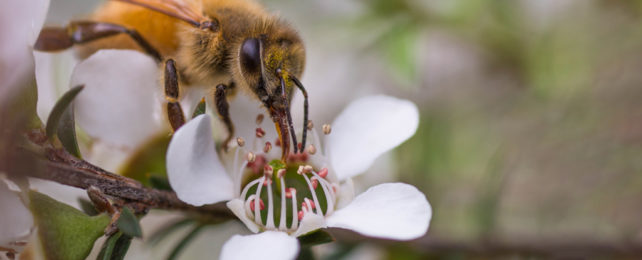Humans have used honey for its antimicrobial properties for millennia, and science has only recently been catching up.
Researchers recently demonstrated in the laboratory that mānuka honey could help us treat one of the most aggressive and drug-resistant lung infections.
"The use of this potential treatment combining amikacin and mānuka honey shows great promise as an improved therapy for these terrible pulmonary infections," says Aston University microbiologist Victoria Nolan.
Patients with pre-existing lung conditions like cystic fibrosis are particularly vulnerable to the bacteria Mycobacterium abscessus, which is distantly related to tuberculosis.
Treating this bacteria in the lungs is complicated in part because there are several strains, all having resistance to different drugs. It involves 12 months of antimicrobial chemotherapy alongside a cocktail of antibiotic drugs, including amikacin, that have severe side effects.
Even if patients can endure nausea and vomiting and escape potential hearing loss, liver damage, and a reduction of their white blood cells and the blood components involved in clotting, to adhere to the treatment, successful treatment rates are still only up to 50 percent at most.
This nasty, belligerent bacteria can also cause persistent skin and soft tissue infections and infect any organ in our bodies.
Bees create mānuka honey from the nectar of Leptospermum tree species, which are native to Australia, New Zealand, and Southeast Asia.
These mānuka flowers have glycerone sugars in their nectar, which once converted to honey slowly react to become methylglyoxal (MGO) over time.
MGO, which isn't present in other honeys, has been associated with antimicrobial properties.
So Nolan and colleagues tested different concentrations of this honey against the bacteria in tissue cultures. Taken from 16 patients infected with cystic fibrosis or bronchiectasis, the strains of M. abscessus used were all resistant to first-line antibiotic treatments.
While all mānuka-related treatments were able to destroy M. abscessus, the whole honey proved more effective than isolated MGO, suggesting other active components in the honey may help overcome the bacteria's drug resistance mechanisms.
The researchers recommend further investigation into these components.
Nolan and the team also tested nebulizing mānuka honey – converting it into a breath-in-able mist – to use along with one of the antibiotics, amikacin, in laboratory human lung models.
They found the aid of the honey drastically lowered the amount of amikacin needed for successful treatment from 16 micrograms per milliliter to just 2 micrograms per milliliter. This would significantly reduce the horrible side effects of the drug.
"By combining a totally natural ingredient such as mānuka honey with amikacin, one of the most important yet toxic drugs used for treating Mycobacterium abscessus, we have found a way to potentially kill off these bacteria with eight times less drug than before," explains Aston University microbiologist Jonathan Cox.
"This has the potential to significantly reduce amikacin-associated hearing loss and greatly improve the quality of life of so many patients – particularly those with cystic fibrosis."
The team is hopeful their discovery will soon advance to clinical trials. Both mānuka and non-mānuka honeys have already been developed into medical-grade substances for use with things like wound dressing or nebulized for asthma treatments in rabbits, so they already have a good safety track record.
With more than 100,000 people globally vulnerable to this pathogen due to cystic fibrosis and hundreds of thousands more with bronchiectasis who are also susceptible to the bacteria, such a powerful treatment can't come soon enough.
This research was published in Microbiology.
